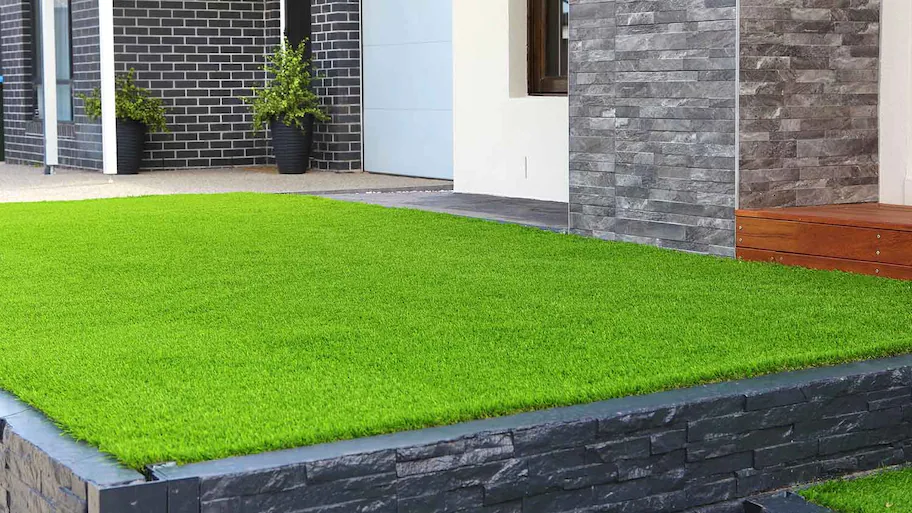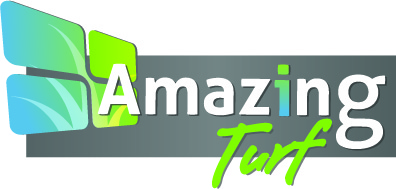Level Up Your Landscape: Mastering Artificial Grass on Uneven Concrete
Unlock the full potential of your outdoor spaces with this expert guide, transforming uneven concrete into a flawless, lush green haven with ease and confidence.
The idea of transforming an uneven concrete expanse into a lush, inviting green space is a vision many homeowners and businesses aspire to achieve. Converting drab, grey areas into vibrant, green landscapes offers an aesthetic and functional upgrade to any property.
This guide delves into the specifics of how to install artificial grass on concrete, particularly focusing on uneven surfaces that present unique challenges. From addressing the initial condition of the concrete to the final touches of your artificial turf installation, we cover every step necessary to ensure a successful transformation. Whether cracks or slopes mar your space or the wear and tear of time, this comprehensive guide will help you navigate the process, culminating in a beautiful, low-maintenance artificial lawn.

Expanded Step-by-Step Guide on Laying Artificial Grass on Uneven Concrete
- Assess and Clean the Concrete Surface: Initiate the project with an exhaustive examination of the concrete surface to pinpoint areas of significant unevenness, visible cracks or other forms of damage that could hinder the installation. Thoroughly clean the area to remove all forms of debris, dirt, and stains, which is pivotal for a successful artificial grass application. Employing a power washer is an effective approach to eliminate any adhered substances, ensuring a clean surface ready for the artificial turf.
- Level and Repair Uneven Areas: Address any minor unevenness by applying a self-levelling compound directly over the concrete. This step is instrumental in achieving a uniformly level surface, crucial for the aesthetic and functional success of your artificial lawn. For more substantial discrepancies, such as large cracks o damage, utilise a concrete patch compound for filling. These repairs must be allowed to dry thoroughly, resulting in a smooth surface ready for the subsequent installation steps.
- Apply a Shock-Absorbent Layer (Optional but Recommended): Incorporating a shock-absorbent layer, like a foam underlay, atop the concrete serves multiple benefits. It not only offers additional comfort underfoot but also plays a crucial role in achieving a level surface over uneven concrete. Importantly, this layer significantly enhances drainage for artificial grass on concrete, mitigating water pooling and directing moisture away from the surface. Moreover, it accommodates minor imperfections in the concrete, contributing to the longevity and stability of your artificial turf.
- Roll Out the Artificial Grass: Carefully roll out your chosen artificial grass across the prepared area. Allow the turf some time to acclimate and flatten, thereby minimising any creases or folds from the packaging. Ensuring that the blades of grass uniformly point in the same direction is critical for a cohesive and natural-looking installation.
- Trim and Fit the Grass: Using a sharp utility knife, meticulously trim the artificial grass to conform to the contours of your concrete area. Precision in this step avoids excess waste and ensures a snug fit, which is essential for the polished look of the finished project.
- Adhere the Artificial Grass to the Concrete: A crucial step involves securing the artificial grass to the concrete using an appropriate outdoor adhesive. Apply this adhesive along the concrete’s perimeter and at the seams between grass sections, pressing down firmly to establish a strong bond. This ensures the turf remains in place, providing a seamless and stable lawn surface.
- Secure and Finish the Edges: To prevent fraying or lifting, reinforce the edges of your artificial turf. Additional adhesive, specialised outdoor tape, or tailored edging materials can be employed to enhance the durability and neatness of the perimeter.
- Add Infill (If Necessary): Although not always a requirement for artificial grass laid on concrete, infill can be instrumental in anchoring the turf, maintaining the upright position of the blades, and contributing to the overall resilience of the lawn. Select an infill material compatible with your artificial grass type and distribute it evenly using a spreader, working it into the base of the turf fibres for optimal stability.
Addressing Underlay and Drainage Considerations
Do You Need Underlay for Artificial Grass on Concrete?
While not always mandatory, an underlay is highly recommended, especially on uneven concrete surfaces. It serves not just as a cushion but also significantly improves drainage, a crucial aspect of maintaining the integrity and longevity of your artificial lawn.
Drainage for Artificial Grass on Concrete: Proper drainage is a paramount consideration when installing artificial grass over concrete, particularly to avoid water accumulation that could lead to mould, mildew, or substrate erosion underneath. The selection of a permeable underlay, combined with strategic placement of drainage holes if feasible, ensures water is efficiently diverted away from your lawn, maintaining its appearance and durability over time.
By meticulously following these expanded steps and giving special attention to underlay and drainage solutions, how to lay artificial grass on uneven concrete becomes a manageable and rewarding project. This guide ensures your transition to an artificial lawn is not only aesthetically pleasing but also functional and enduring, transforming your outdoor space into a lush, maintenance-free area for enjoyment.
Dos and Don’ts of Laying Artificial Grass on Uneven Concrete
Laying artificial grass on uneven concrete can dramatically transform an outdoor space, but it requires careful planning and execution. Here are essential dos and don’ts, along with precautions to ensure a successful installation.
Do:
- Do assess the area thoroughly: Before beginning, thoroughly inspect the concrete surface for any cracks, unevenness, or damage. Understanding the condition of the area is crucial for how to lay artificial grass on uneven concrete effectively.
- Do clean the surface: Ensure the concrete is free of debris, dirt, and stains. A clean surface improves the adhesion of the artificial grass and prevents issues down the line.
- Do use a self-levelling compound for minor unevenness: For slight irregularities, applying a self-levelling compound can provide a smoother surface, enhancing the overall appearance and safety of your artificial lawn.
- Do install a suitable drainage system: Proper drainage is essential, especially on uneven surfaces, to prevent water pooling beneath the grass. Consider the slope and incorporate additional drainage solutions if necessary.
- Do choose the right underlay: A shock-absorbent underlay not only adds comfort but also helps to even out minor imperfections and supports drainage.
- Do secure the edges and seams properly: Use quality adhesives and ensure that the edges of your artificial grass are well secured to the concrete. This prevents peeling or lifting and maintains the integrity of your installation.
Don’t:
- Don’t skip the preparation phase: Neglecting to prepare the concrete surface properly can lead to issues with drainage, adhesion, and the longevity of the artificial grass.
- Don’t underestimate the importance of drainage: Failing to address drainage adequately can cause water to accumulate, leading to mould, mildew, and other moisture-related problems.
- Don’t cut corners with materials: Using low-quality artificial grass, underlay, or adhesives can affect the appearance and durability of your lawn. Invest in high-quality materials for the best outcome.
- Don’t ignore the direction of the grass blades: Laying the turf without considering the orientation of the blades can result in an inconsistent appearance. Always ensure the blades point in the same direction for a uniform look.
- Don’t rush the installation: Taking shortcuts or rushing through the installation process can compromise the quality and longevity of your artificial lawn.
Precautions:
- Test for lead: If working with old concrete, test for lead in painted surfaces to ensure safety during preparation and installation.
- Wear protective gear: During preparation and installation, wear appropriate protective gear, including gloves, eyewear, and a mask, especially when dealing with chemicals or performing tasks that generate dust or debris.
- Mind the weather: Avoid installing artificial grass on extremely hot days. Heat can cause the surface to expand and make the grass more difficult to work with.
- Consider professional help: For complex areas or to guarantee the best outcome, consider hiring professionals experienced in how to lay artificial grass on uneven concrete.
Following these dos, don’ts and precautions can help you achieve a beautiful, durable artificial lawn over uneven concrete, transforming your space into an inviting, maintenance-free area.
Why choose a professional for how to install artificial grass on concrete?
Choosing a professional for how to install artificial grass on concrete is a decision that can significantly impact the success and longevity of your project. While DIY installations might seem cost-effective and rewarding, the expertise, efficiency, and assurance provided by professional installers offer unparalleled benefits. Here’s why opting for professional installation is a wise choice:
- Expertise and Experience
Professionals bring years of experience and knowledge to the table. They understand the nuances of how to install artificial grass on concrete, including how to effectively address uneven surfaces, ensure proper drainage, and select the right materials for your specific needs. Their expertise ensures that common pitfalls are avoided and that the installation complies with the best practices and industry standards.
- Quality and Precision
Professional installers use high-quality materials and employ precise techniques to ensure that the artificial grass is installed perfectly. From ensuring the turf is cut and seamed seamlessly to applying the correct amount of adhesive, professionals guarantee a finish that not only looks great but is also built to last. Their attention to detail in every aspect of the installation process results in a flawless appearance and functionality.
- Time-saving and Convenience
Installing artificial grass, especially on a concrete surface, can be time-consuming and labour-intensive for someone inexperienced. By choosing professionals, you save yourself significant time and effort. Professional teams can complete the installation efficiently, minimising disruption to your daily life and allowing you to enjoy your new space sooner.
- Enhanced Durability and Longevity
A professional installation ensures that your artificial grass is laid correctly, which is crucial for its durability and longevity. Professionals understand how to prepare the concrete surface properly, ensure optimal drainage, and secure the turf to withstand various weather conditions and wear over time. This meticulous approach reduces the risk of issues such as lifting edges, rippling, or drainage problems that can affect the turf’s lifespan.
- Warranty and Aftercare
Many professional installations come with a warranty for both the materials and the labour. This warranty provides peace of mind, knowing that should any issues arise with the installation or the materials used, they will be addressed without additional cost to you. Additionally, professional installers can offer valuable advice on how to care for and maintain your artificial grass, ensuring it remains in pristine condition for years to come.
- Customisation and Aesthetic Appeal
Professionals have access to a wide range of high-quality artificial turf options and can offer customised solutions tailored to your preferences and the specific conditions of your space. Whether you’re looking for a particular colour, pile height, or texture, a professional can guide you in selecting the best option to enhance the aesthetic appeal of your property.
Conclusion
Choosing a professional such as Amazing Turf for how to install artificial grass on concrete not only ensures a high-quality installation but also saves time, provides peace of mind through warranties and results in a durable, beautiful outdoor space. Their expertise, precision, and access to premium materials translate into a flawless lawn that enhances your property’s value and your quality of life.
